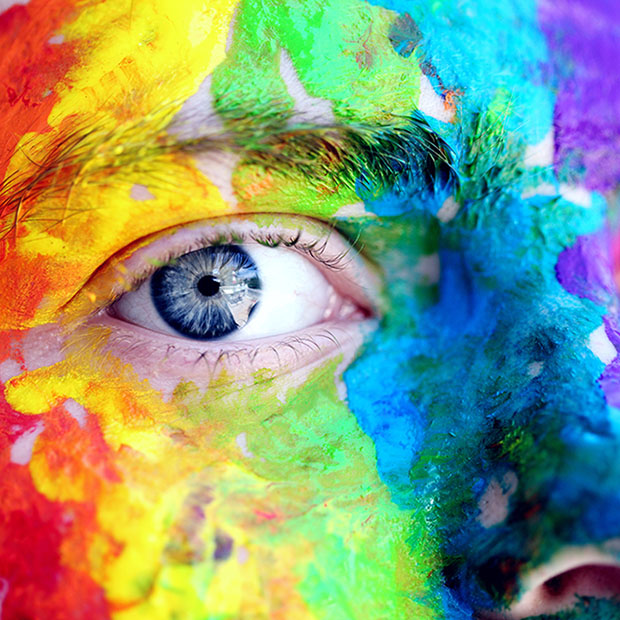Color Blindness Is a Spectrum

Contrary to popular belief, color blindness does not mean seeing in black and white. Usually.
The vast majority of colorblind people can still see some colors. Let’s take a look at the three basic categories of color blindness and how they can impact a person’s daily life.
Red-Green Color Blindness
The most common type of color blindness is red-green color blindness, which affects around 8% of men and 0.5% of women of descent. The difference is because the gene for it is on the X chromosome, so men either have it or don’t, while women need two copies of the gene to be colorblind—if they only have one copy, they are carriers but not colorblind themselves.
In red-green color blindness, the cones in the eye responsible for distinguishing between red and green hues are either missing or do not function correctly. As a result, these individuals may have difficulty distinguishing between shades of red and green, and some colors may appear washed out or similar in appearance. Dogs and many other animals have red-green color blindness.
Blue-Yellow Color Blindness
Another type of color blindness is blue-yellow color blindness, which is less common than red-green color blindness. In blue-yellow color blindness, the cones in the eye responsible for distinguishing between blue and yellow hues are either missing or not functioning as they should, resulting in difficulty distinguishing between shades of blue and yellow.
True Black-and-White Vision
The third and rarest type of color blindness is total color blindness, or monochromacy, where individuals are completely unable to distinguish any colors. Total color blindness is a rare condition and affects only around 1 in 33,000 people. But life isn’t simply a black-and-white movie to monochromats; it typically means a lack of detailed central vision, because that comes from the cones, while they may only have functioning rods. They may also be very sensitive to bright light.
Color Blindness in Everyday Life
While color blindness may seem like a minor inconvenience, it can have a significant impact on daily life. Red-green color blindness can make it difficult to read traffic lights, maps, and graphs, and may limit job opportunities in certain fields, such as aviation or electrical work. Blue-yellow color blindness can make it difficult to distinguish between different colors in art or graphic design.
Aids for Living With Color Blindness
While there is no cure for color blindness, there are tools and techniques that can help individuals with color vision deficiencies. One common method is the use of color filters, which can in some cases enhance the contrast between colors and make it easier to distinguish between them. Color blindness corrective glasses and contact lenses are also available and can help some individuals see a broader range of colors. However, it is important to note that while these tools can improve color vision, they do not restore normal color vision.
The Optometrist Can Identify Color Blindness
During an eye exam, your optometrist will check for color vision deficiencies using specialized tests. They can also provide advice and support on managing color vision deficiencies and recommend appropriate tools and techniques. If you are experiencing difficulty distinguishing between colors or have concerns about your vision, don’t hesitate to schedule an appointment with your optometrist. They can provide the necessary support and guidance to help you maintain a healthy, clear vision.
